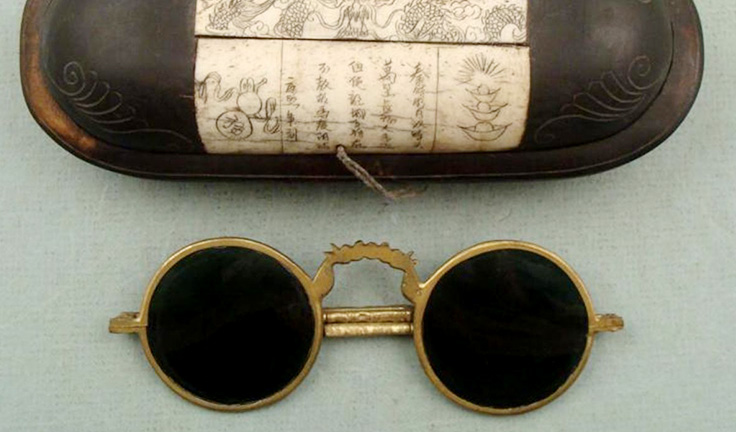|
Polarized lenses reduce glare on water, pavement, and other reflective surfaces by filtering light coming from different angles. These special lenses make colors and objects appear clearer, so you can see every detail of the open road, golf course, or mountain trail ahead.
But not every pair of sunglasses is polarized! Trying to determine if your shades are polarized? We’ll show you a few quick and easy methods to learn if your sunglasses are polarized. Polarized sunglasses are all the rage these days. And why not? There are many benefits to wearing polarized lenses, such as reducing eyestrain and improving vision by blocking excess glare. Heck, for some people, polarized sunglasses can even help lessen or eliminate headaches. All of which is great if you are planning to buy new sunglasses. But what if you already own a pair and don't know or remember whether they are polarized? Do you have to just buy a new pair? Not necessarily. There are several easy ways to determine whether or not your current sunglasses are already polarized. Check out our guide to determining whether or not your sunglasses are already polarized—these tips might save you more than money—they could also save your eyesight. Read This Article: This is so meta it may just blow your mind, but if you wear your sunglasses while reading this article, you may be able to determine whether they are polarized. That's because most modern computer screens utilize the same glare-reducing technology as polarized lenses. If you tilt your glasses while looking at a computer monitor through polarized glasses, portions of your screen will become blank or go dark. The same is true of LCD display screens such as the ones on a gas pump. Crazy, right? Go Fishing: One of the primary benefits of wearing polarized lenses is cutting down on glare, such as the glare you get off a car windshield. Polarized sunglasses are also great at reducing the glare of the sun reflecting off water. If your sunglasses are polarized, instead of only seeing the surface of a lake or river, you will suddenly be able to see through the glare and into the water below. Catching all those fish down there, on the other hand, is up to you. Phone A Friend: If you know somebody who owns polarized sunglasses, figuring out if your own lenses are polarized is as easy as phoning a friend. All you need is their cooperation - and, of course, their glasses. First, hold up your glasses and theirs simultaneously and look through both pairs at the same time. Then, rotate one pair of sunglasses about 60 degrees. If both pairs of glasses are polarized, the overlapping area will darken as they filter out excess light. If your pair isn't polarized, however, you won't notice any difference. Check The Label: Most new polarized sunglasses come with a sticker on one of the lenses stating that the glasses are polarized. But some companies take things a bit further and actually mark their polarized sunglasses in a more permanent fashion. Some even etch the word "polarized" into the bottom edge of the left lens. As a result, even if you bought your glasses months or years ago, it's possible a quick inspection may turn up clues you never even noticed before. If you determine that your wood sunglasses aren’t polarized, a trip to your eye doctor can solve this problem. Your local eye doctor is able to swap out the lenses in any frames for polarized lenses, typically in a week or less. For those full-time glasses wearers, you can even have your eye doctor add your prescription to your polarized sunglasses.
0 Comments
1) They wore/made the first snow goggles or eye-wear traditionally used by the Inuit people of the Arctic to prevent snow blindness.The wood goggles are traditionally made of a piece of bone, ivory, or wood pierced with slits and look pretty awesome! They could be considered the first polarized style of sunglasses as they were made to cut down the glare of the snow. 2) Sunglasses made from flat panes of smoky quartz, which offered no corrective powers but did protect the eyes from glare were used in China in the 12th century or possibly earlier. Also, Ancient documents describe the use of such crystal sunglasses by judges in ancient Chinese courts to conceal their facial expressions while questioning witnesses. Now you know why professional poker players play with sunglasses! 3) James Ayscough began experimenting with tinted lenses in spectacles in the mid-18th century. These were not "sunglasses" as such; Ayscough believed blue- or green-tinted glass could correct for specific vision impairments. Protection from the sun's rays was not a concern of his. 4) It wasn't until the 20th century that modern-type sunglasses came to be. In 1929, Sam Foster, founder of the Foster Grant company sold the first pair of Foster Grant sunglasses on the Boardwalk in Atlantic City, NJ. By 1930, sunglasses were all the rage. 5) With World War II brewing in 1936, Ray Ban designed anti-glare aviator style sunglasses, using polarized lens technology newly created by Edwin H. Land, founder of the Polaroid Corporation. They also designed a slightly drooping frame perimeter to maximally shield an aviator’s eyes, which repeatedly glanced downward toward a plane's instrument panel. Fliers were issued the glasses at no charge, and the public in 1937 was able to purchase the model that banned the sun's rays as Ray-Ban aviator sunglasses. And that takes us to PLANK Eyewear! Unique and fashionable. Lightweight and comfortable.
|
PLANK BLOGArchives
June 2021
Categories |







 RSS Feed
RSS Feed